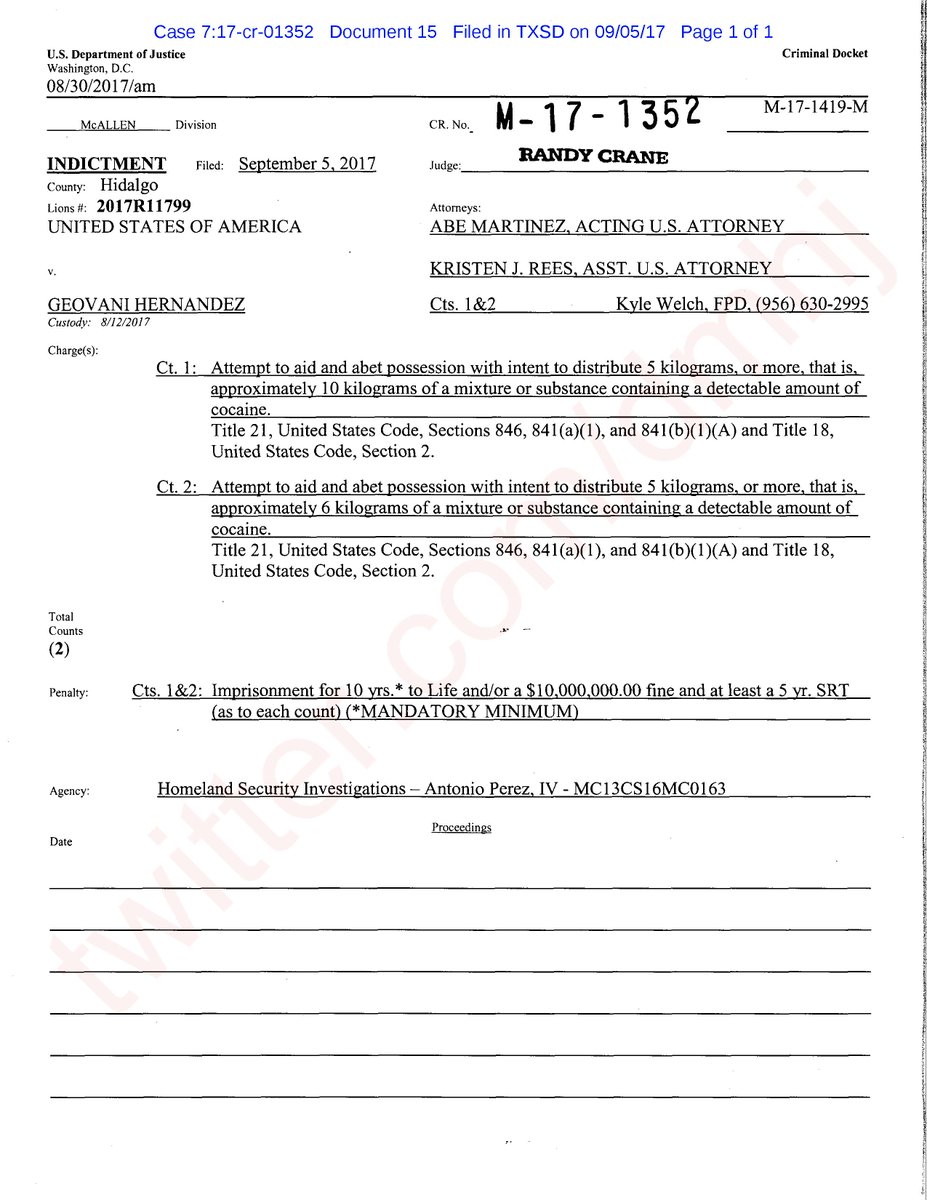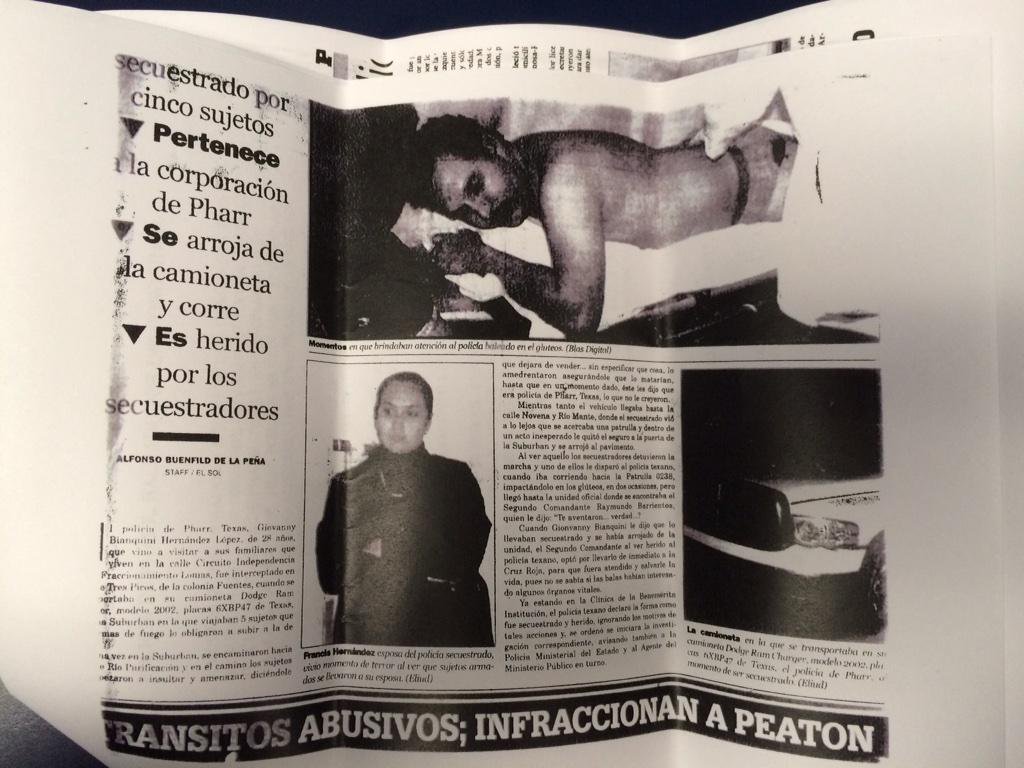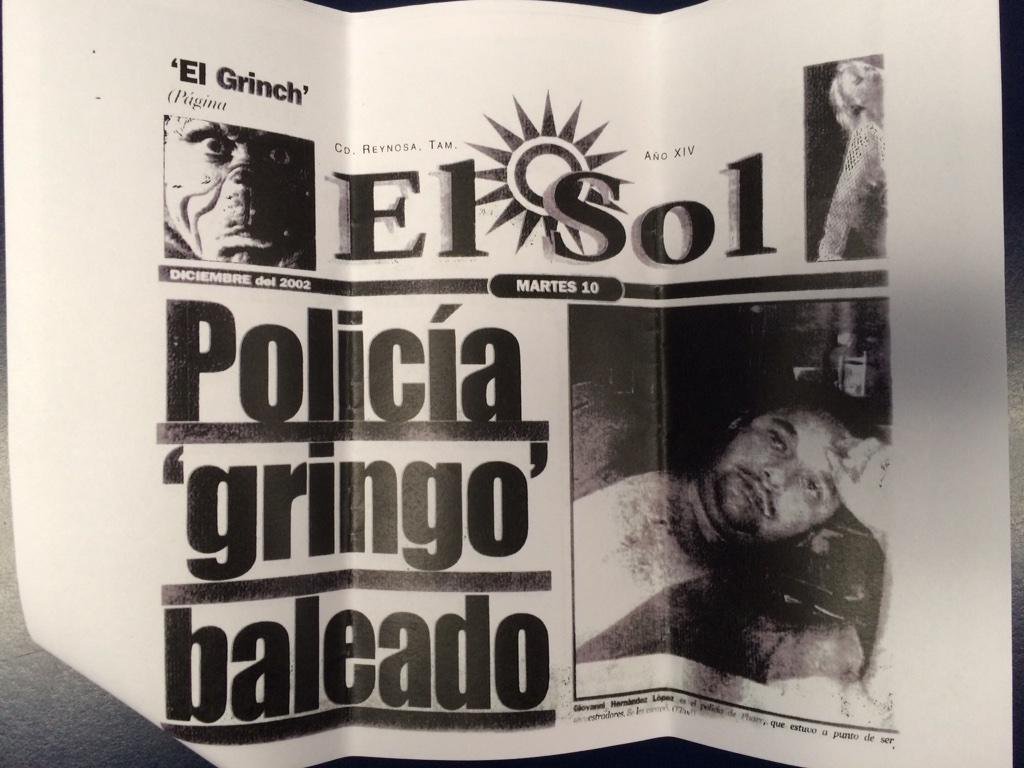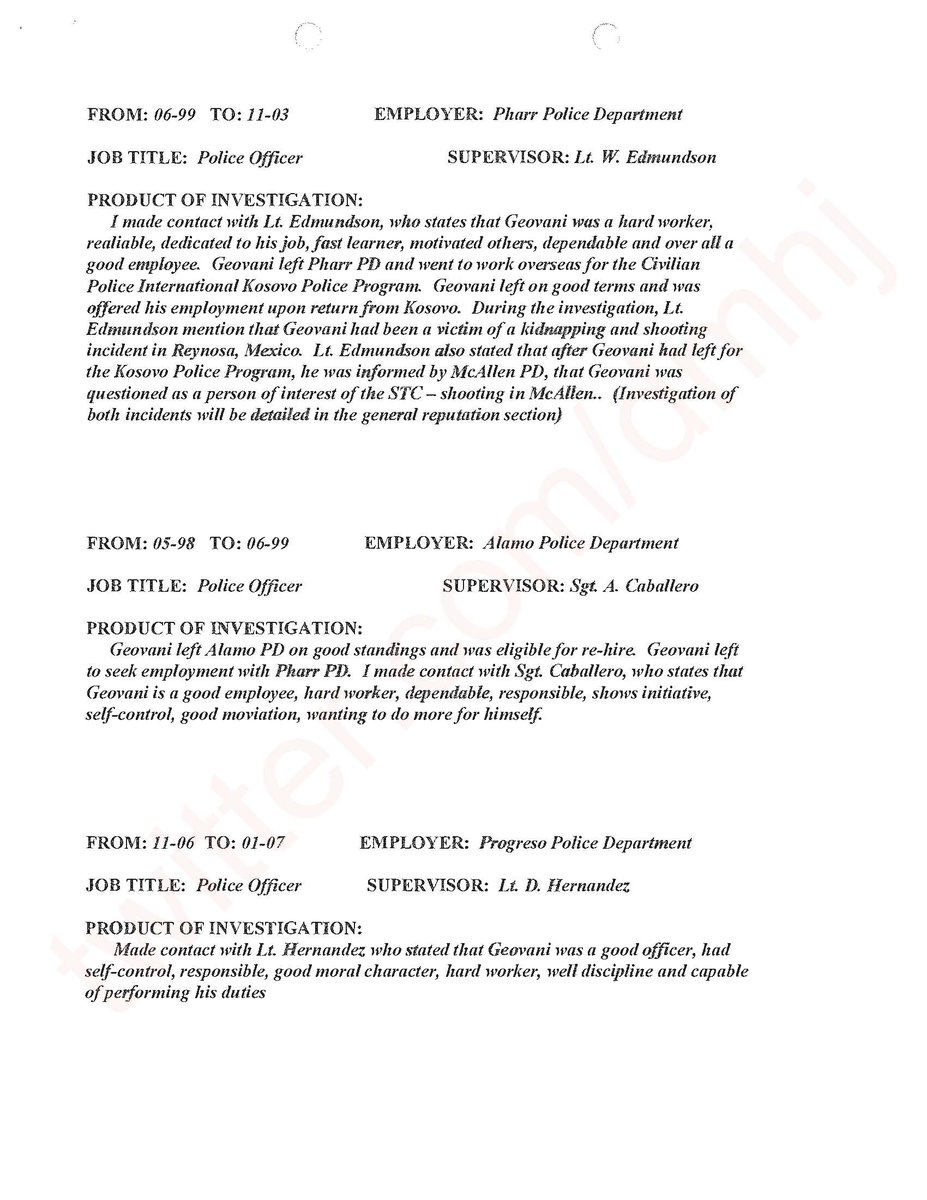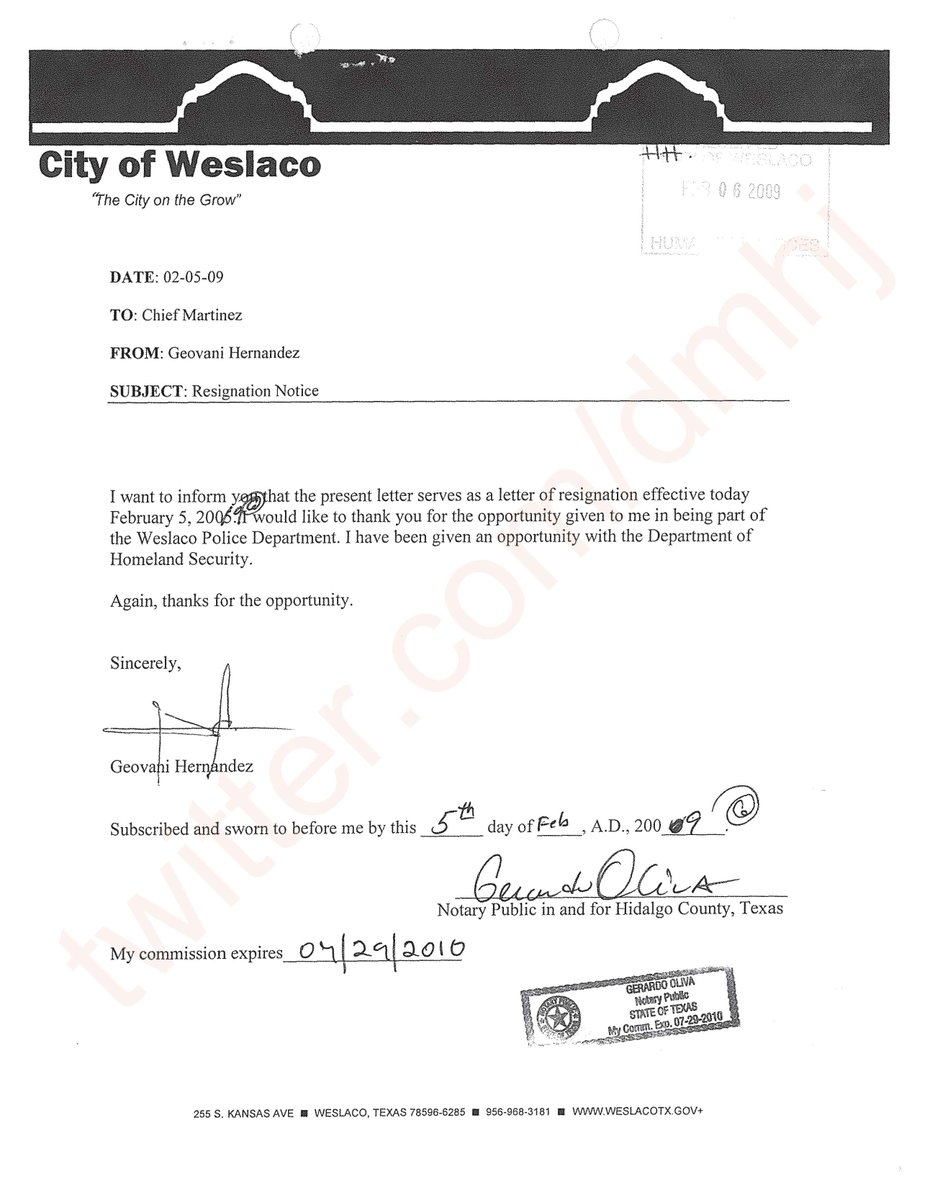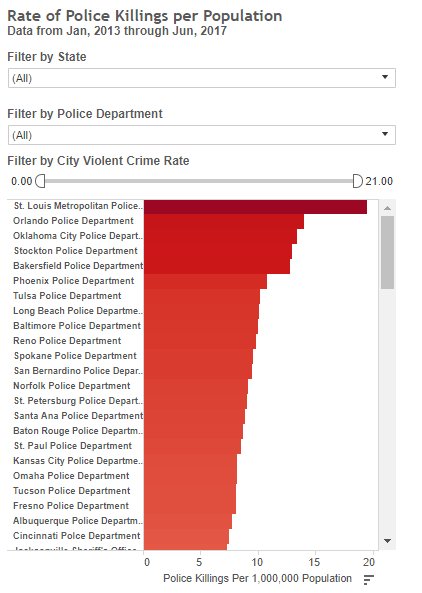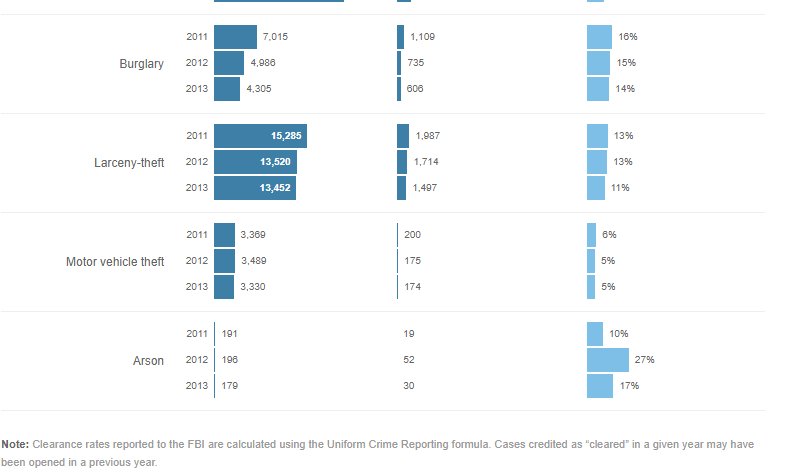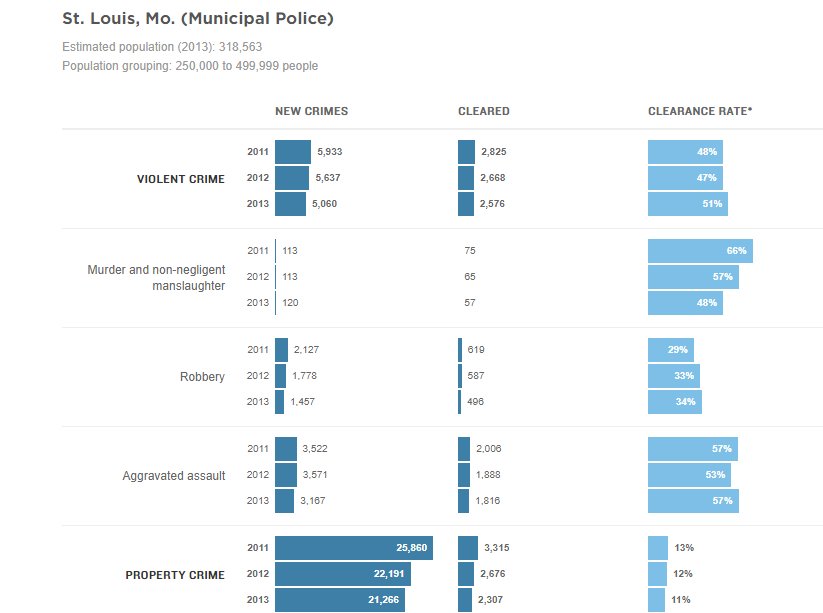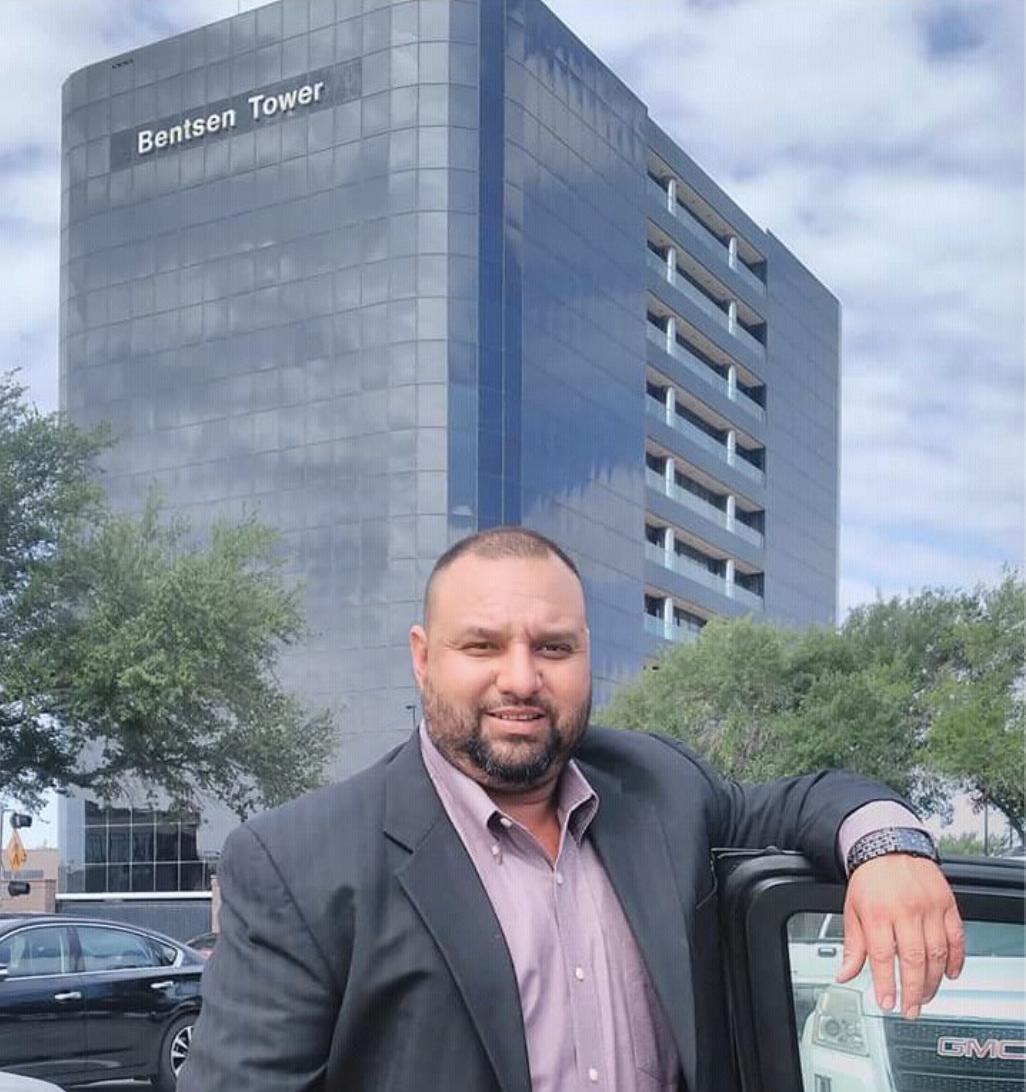
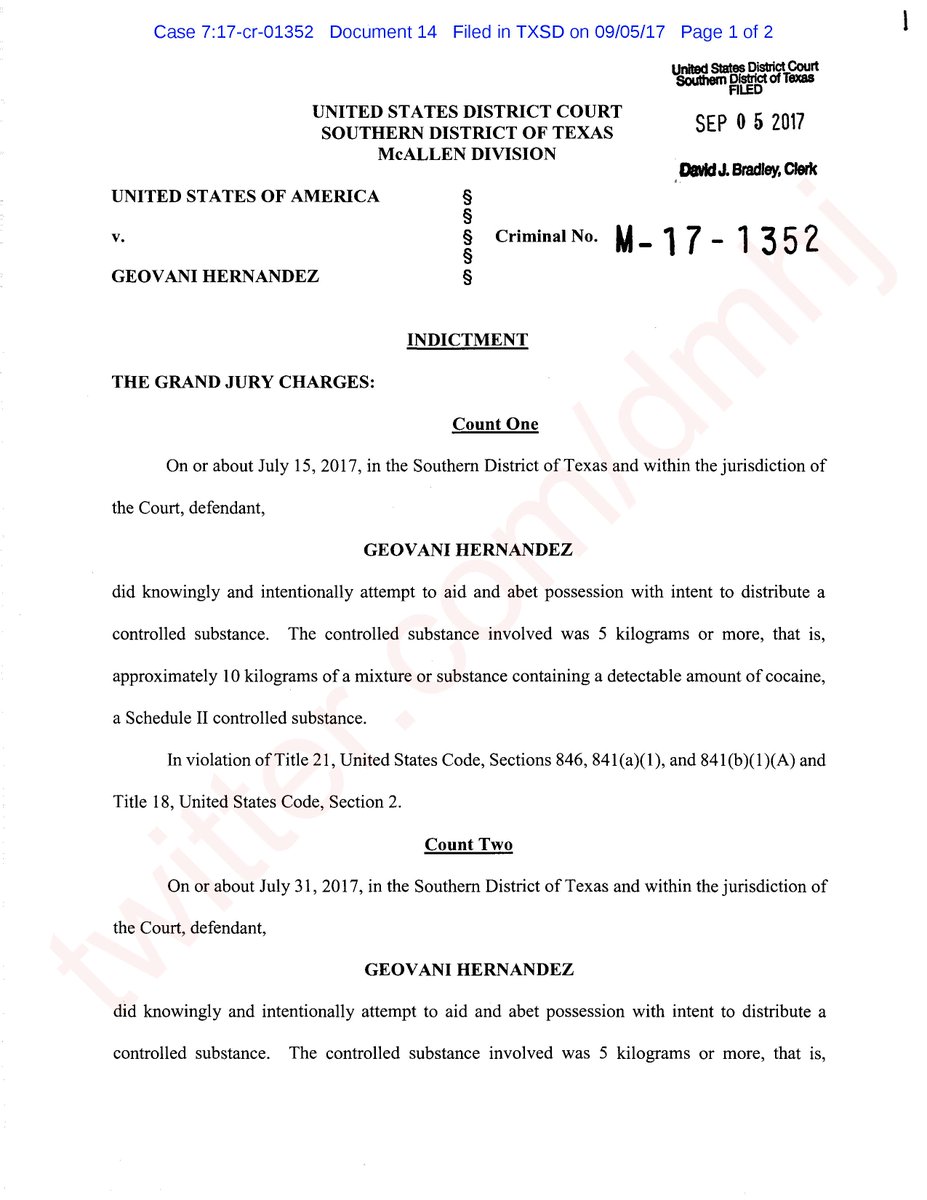
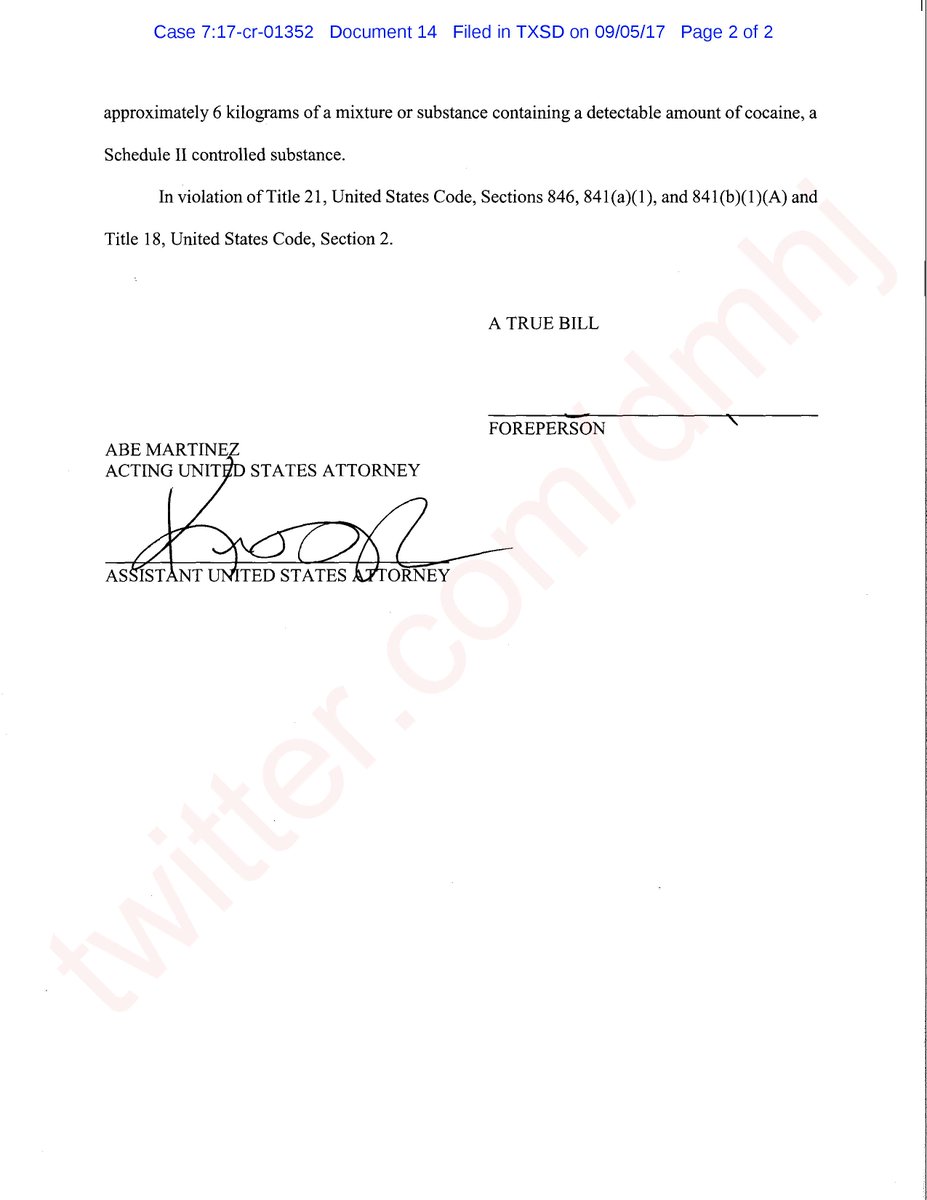
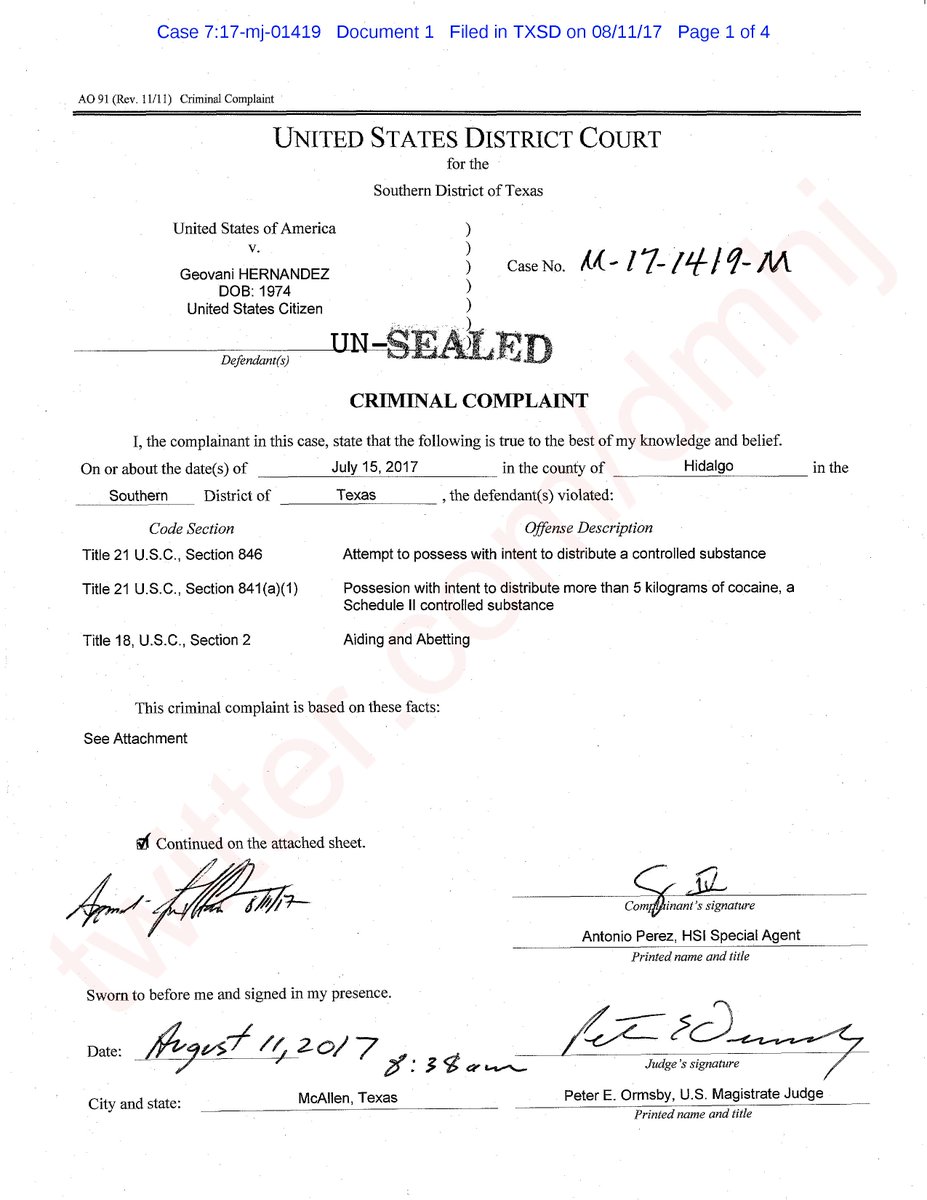
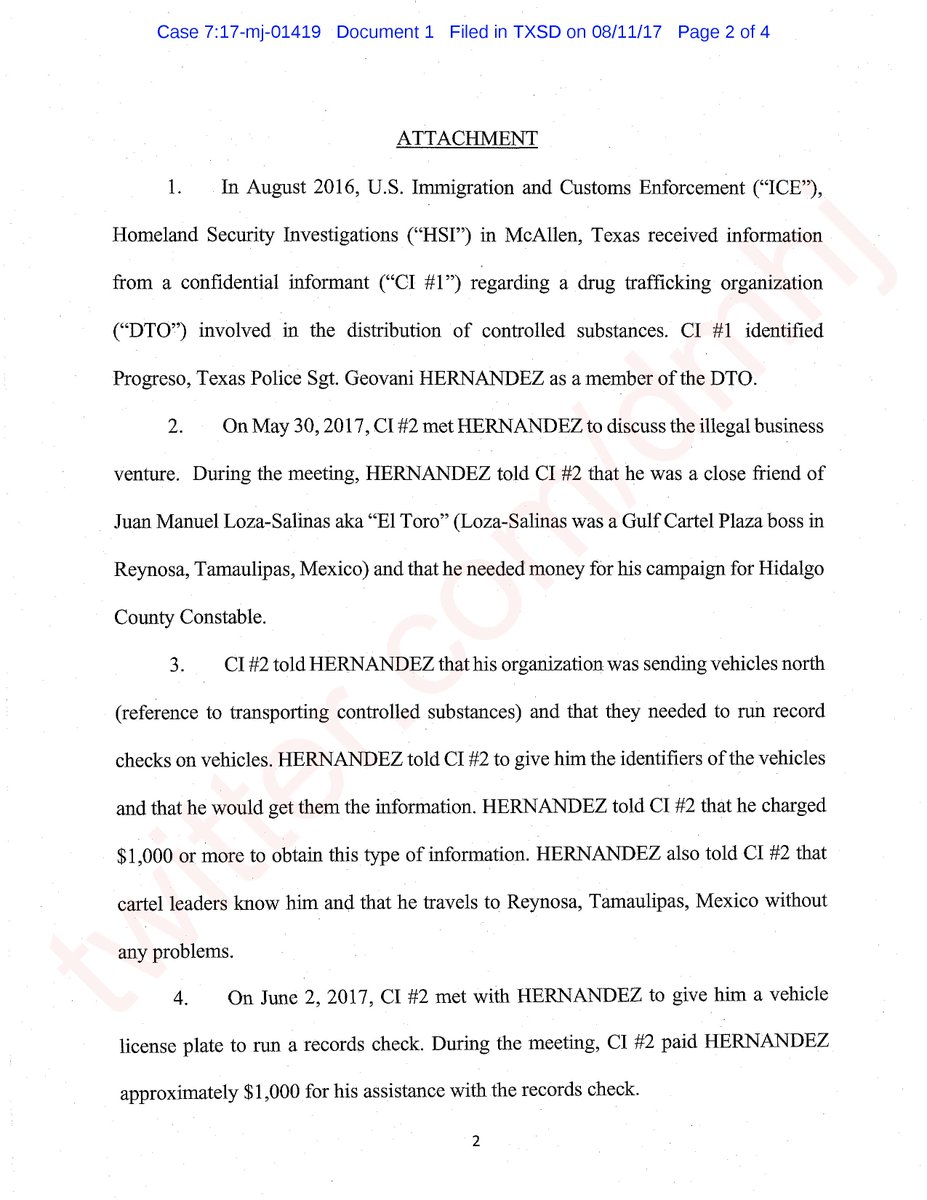
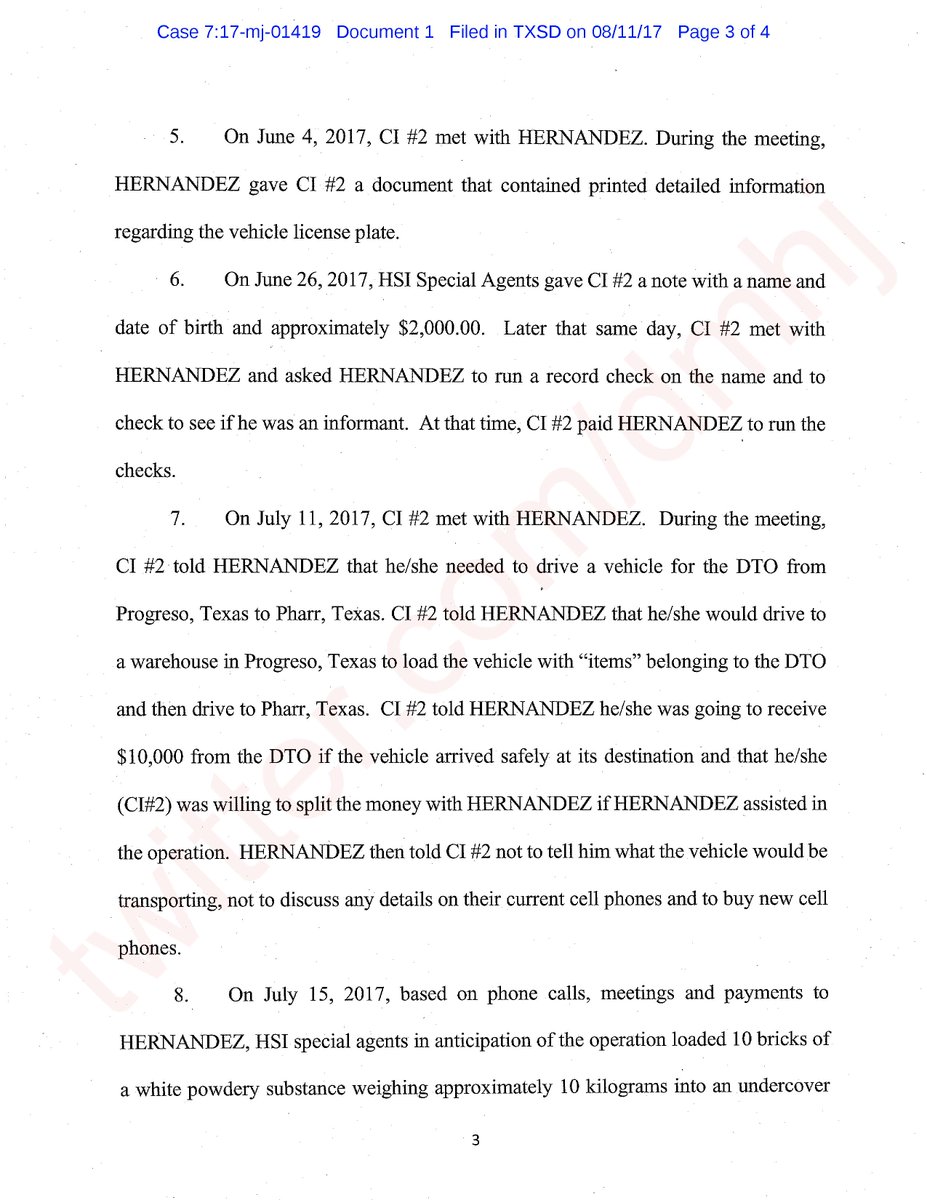

The government informant, Hector Obed Saucedo-Rodriguez, didn't always pay Hernandez — he pocketed some or all of the money on three occasions.
Background: progresstimes.net/news/local-new…
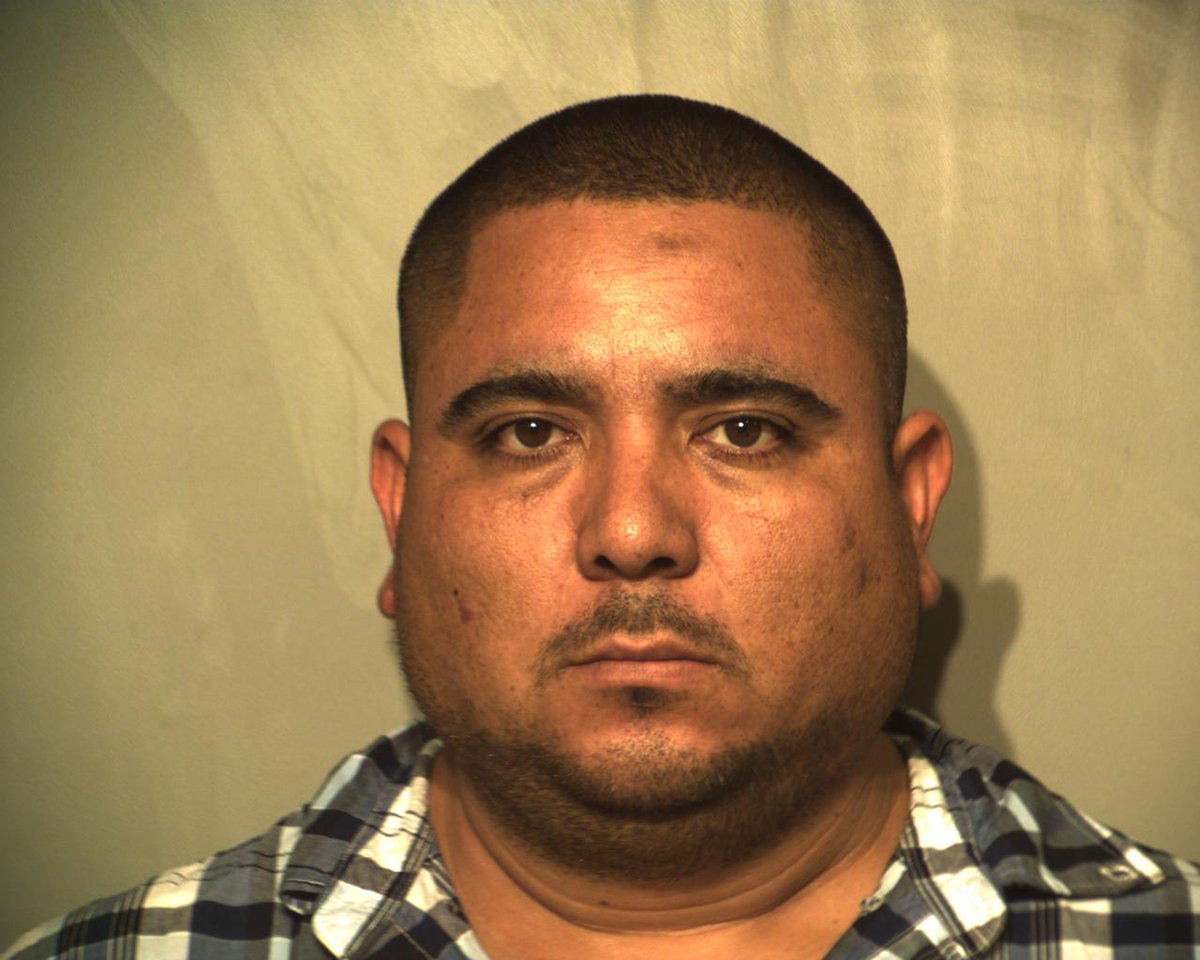
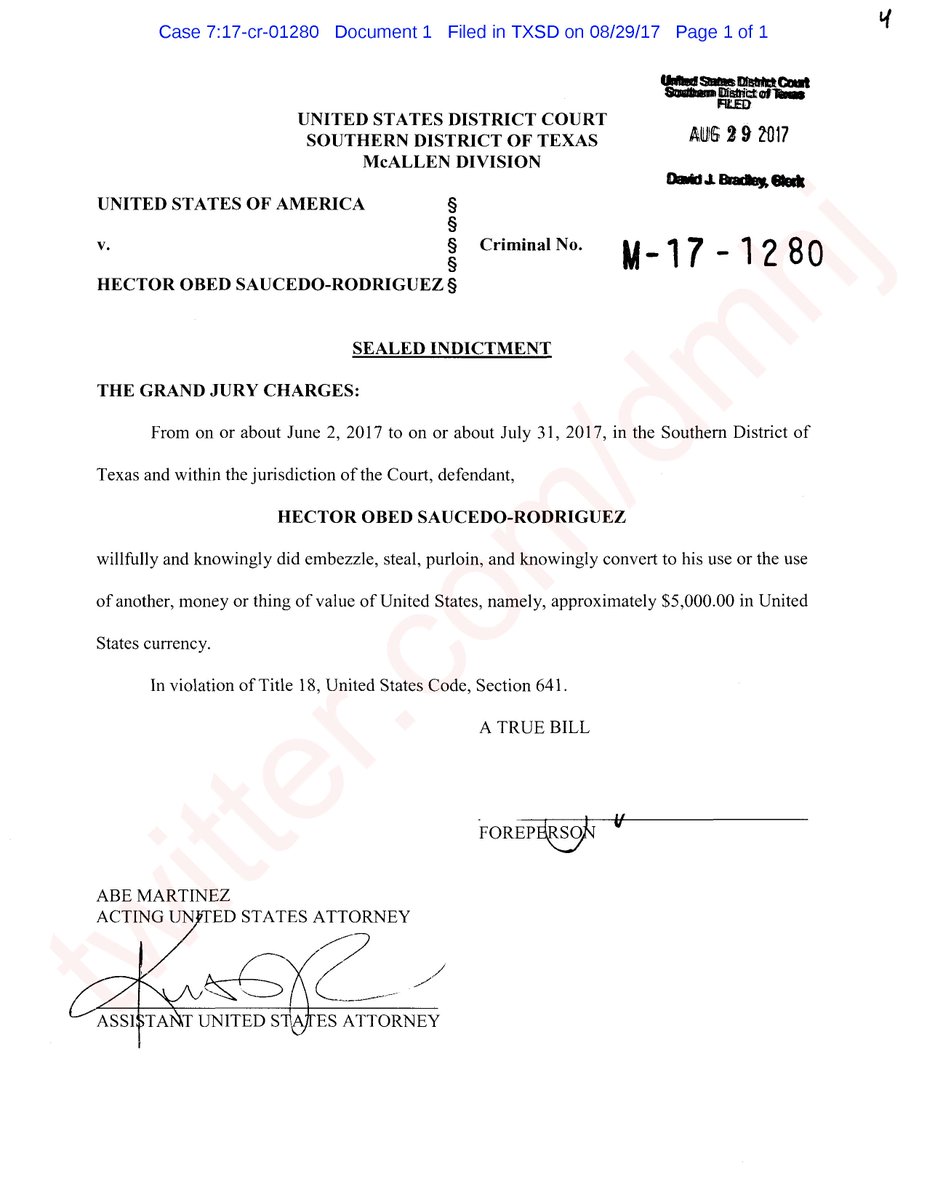
Hernandez is wearing jeans and a blue suit jacket.
Rees is prosecuting the case.
The government turned over changes to witness statements and new information that surfaced during trial preparation.
(Hernandez isn't charged with that.)
Prosecutors will notify the court before that testimony occurs.
The jury consists of 12 jurors and two alternates. Eight women and six men.
Ex: Jurors may not discuss the case, even among themselves, until deliberations begin. Don't talk to the attorneys. Don't do any independent investigation. Don't read the newspaper or watch TV coverage of the case.
They'll also hear about how Hernandez and an informant discussed their connections to the Gulf Cartel.
Ayala says the informant, Saucedo-Rodriguez, used drugs and stole money.
"He chose what was recorded and what was not."
Sturgis asks about how people become informants. SA Garza says forms must be filled out before people become "confidential sources." They run background checks. Explain the rules.
Background: justice.gov/usao-sdtx/pr/l…
The informant (Saucedo-Rodriguez) met with Hernandez there. SA Antonio Perez provided the informant with a recording device to tape the conversation.
The drug shipment was what the agents call a "controlled delivery" AKA a sting operation.
"And Mr. Saucedo said 'No, I actually kept $2,500 of it.'"
So agents confronted Saucedo-Rodriguez (the informant) after the July 31 operation. And that's when he admitted to stealing part of the money.
SA Garza says he doesn't know.
SA Garza says it would depend on what, exactly, the source said. But they do include information about motivation.
SA Antonio Perez filled out the forms. Not SA Garza.
Would he document violent behavior on the paperwork? Danger to the public? Etc. (Acosta references DWI. Saucedo-Rodriguez was arrested by McAllen PD on a DWI charge.)
SA Garza says no, not always. It depends on the circumstances.
SA Garza says Saucedo-Rodriguez confessed on July 31, when they caught him with $2,500.
SA Garza says that regardless of how Hernandez provided vehicle information to the informant (private license plate database, law enforcement database, etc.) it's illegal.
Judge Crane calls a 10-minute break.
Geovani V. Hernandez, 44, was born in Weslaco. After graduating from high school, he worked as a security guard at Rio Grande Regional Hospital.
Over the years, he worked for eight Rio Grande Valley police departments and the U.S. Border Patrol.
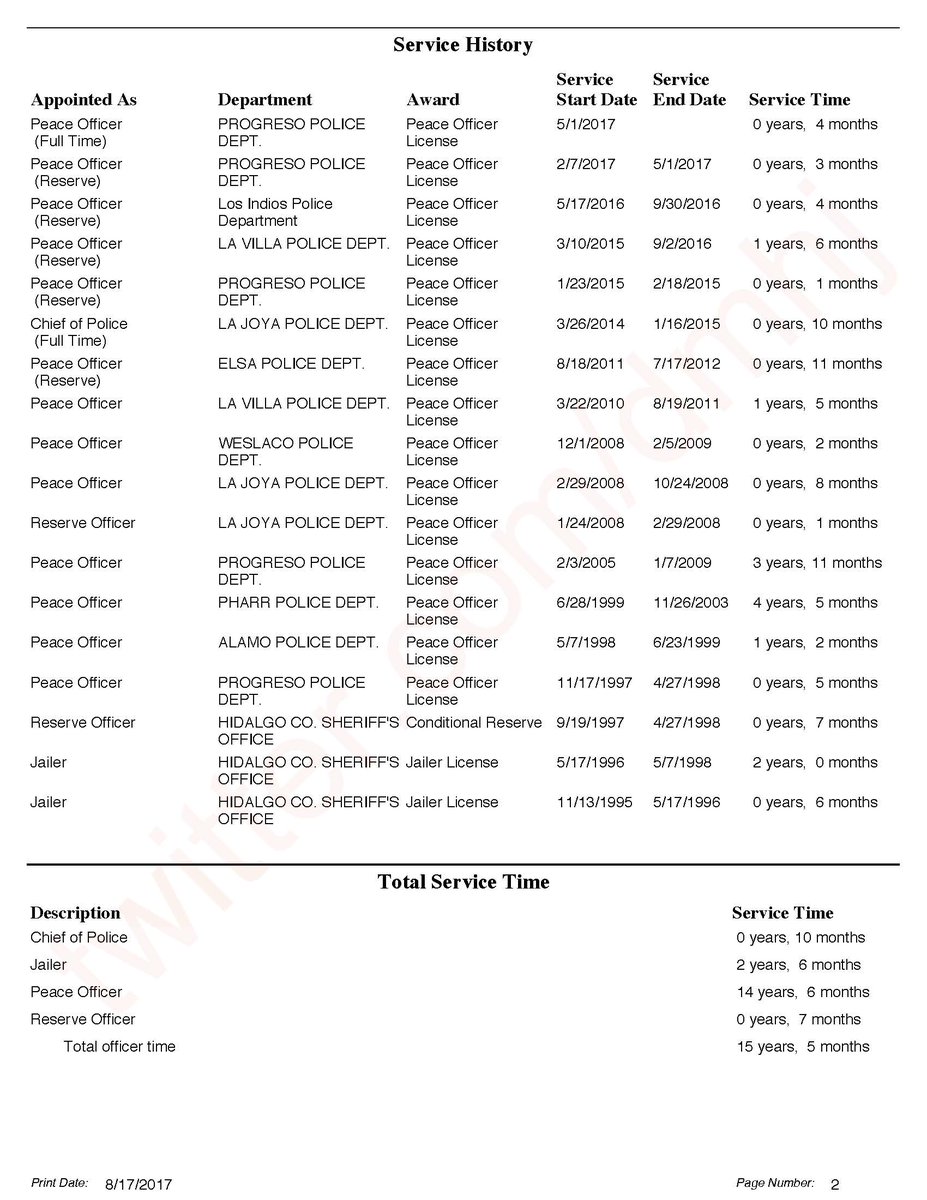
Judge Crane asks how many jurors are fluent in Spanish. All 14 jurors raise their hands.
He previously worked for members of the Gulf Cartel, helping cartel members register home under other names and acquire vehicles.
They had a mutual acquaintance called "Mario."
They met at Hernandez's "ranch" in/near Weslaco.
How? Saucedo-Rodriguez said he heard that Hernandez collected the "quota" from eight-liners in La Joya.
Mario introduced Saucedo-Rodriguez to Hernandez. They talked about setting up game rooms.
They both knew Commandant Toro, the Gulf Cartel boss in Reynosa, and a Zetas cartel operative who went to prison.
Maritssa Salinas said that Hernandez was under investigation, and maybe Saucedo-Rodriguez could provide information on him to ICE Special Agent Antonio "Tony" Perez.
Saucedo-Rodriguez agreed to work with ICE agents to help his wife.
They met at the movie theater near the intersection of Trenton Road and Sugar Road in Edinburg.
Judge Crane is now talking with the attorneys about how to play the audio and handle the live transcript / translation.
We'll be back after lunch.
AUSA Kristeen Rees, Geovani Hernandez and his mother are in the courtroom, waiting for Judge Crane and the jury to return from lunch.
Details about the work Hernandez did for Border Patrol (and why he left) aren't public.
The U.S. Department of Homeland Security refused to release the any documents without Hernandez's permission.
Still waiting for Judge Crane and the jury.
Hector Obed Saucedo-Rodriguez, the informant, is returning to the stand. They're preparing to play the audio recording again.
Saucedo-Rodriguez said that Hernandez offered to take photos of undercover police vehicles and send the photos to him — so they could spot undercover cops.
After the meeting, Saucedo-Rodriguez gave the recording device to HSI Special Agent Antonio "Tony" Perez.
Agents gave him "papers" that would stop him from being deported.
But Saucedo-Rodriguez didn't tell the agents that he used cocaine.
Why? He feared that members of the Gulf Cartel would kill him.
Why? Hernandez played loud music during the meeting.
They laugh and say that, regardless, they're fine on the U.S. side of the border.
At that point, Saucedo Rodriguez said that Hernandez started telling him "El Toro," the Gulf Cartel boss in Reynosa, had been killed.
Hernandez said "El Toro" was his compadre, Saucedo-Rodriguez said.
Saucedo-Rodriguez needed information about the cars, arrest warrants, etc., to make sure the cars and drivers were "clean."
In the photo, Hernandez is holding a rifle.
Saucedo-Rodriguez said that Hernandez wanted him to invest $100,000.
Hernandez suggested that Saucedo-Rodriguez find a "Padrino" to help him make the investment.
Hernandez said he would charge $1,000 for information on two license plates and serial numbers.
Saucedo-Rodriguez: "I stole $500 and I gave Mr. Geovani Hernandez the other $500."
They met at the Walmart in Weslaco. Saucedo-Rodriguez got into Hernandez's car and they started talking.
They met again on June 4 at the "Stripes" at U.S. 281 and Nolana Loop.
On the tape, Hernandez is reading the vehicle information that Saucedo-Rodriguez requested.
AUSA Rees puts the copy of the information on the courtroom projector.
It's a printout from PublicData.com. (Hernandez is charging Saucedo-Rodriguez wayyy more than PublicData searches cost.)
At the meeting, Hernandez said he had a way to "check" people with the "DHS," which apparently was a reference to the U.S. Department of Homeland Security.
Saucedo-Rodriguez said he would meet with Hernandez again on June 26. The agents gave him $2,000 to pay Hernandez.
They let Saucedo-Rodriguez meet with Hernandez again on July 11, 2017.
Saucedo-Rodriguez: "Man they want the car to get to Pharr. Escorted if possible ..."
...
Saucedo-Rodriguez: "I'm supposedly going to get to a warehouse, and that's where they're going to give me the items, it's a little warehouse there in ..."
Saucedo-Rodriguez offered to call Sergio Almanza's people. "You want me to put him on? I'll put him on for you."
Hernandez: "This sounds like a federal ambush to me."
The transcript reads: "Sergio Almanza Sergio Martinez, his people. You want me to put him on? I'll put him on for you."
So he backtracked and said "they" didn't actually want an escort. "They" just wanted the drug load to get to Pharr.
Hernandez: "You don't know what's in it."
Saucedo-Rodriguez: "Yes, I do know what's in it."
Hernandez: "Don't say anything."
Saucedo-Rodriguez: "Okay."
Hernandez: "Tomatoes."
Saucedo-Rodriguez: "Tomatoes. (Laughs)."
Saucedo-Rodriguez: "You're not going to get paid $5,000 to move tomatoes from Progreso to Pharr."
The informant, Hector Obed Saucedo-Rodriguez, is still on the witness stand.
(It was, of course, really a government sting operation.)
Hernandez suggested that he would throw a BBQ at Progreso PD and make sure everyone went. That would keep officers off the road.
In reality, he knew the woman driving the load vehicle was his wife, Maritssa Salinas.
Hernandez kept referring to the work they were doing as an "investigation."
Saucedo-Rodriguez: "He wanted Padrinos from the Gulf Cartel to contribute money."
For example, at one point he referred to the drugs as "boyfriends" and asked where in the car they would be hidden.
(He didn't name the other Progreso police officer.)
USA Rees appears to be highlighting various things that Hernandez said and did. Ex: That they were following a woman and taking pictures. (When they weren't actually doing that.)
We'll start at 8:30 a.m. tomorrow.
